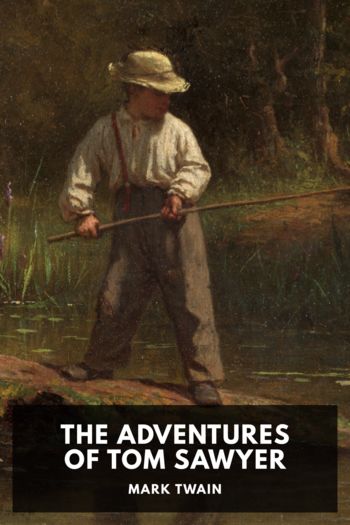The Autobiography of Mark Twain by Mark Twain (good book recommendations .TXT) 📕

Description
The Autobiography of Mark Twain is a collection of reminiscences and reflections. Twain began dictating them in 1870, and in 1906 he published Chapters from My Autobiography in twenty-five installments in the North American Review. He continued to write stories for his autobiography, most of which weren’t published in his lifetime due to a lack of access to his papers, or their private subject matters. After Twain’s death, numerous editors have tried to organize this collection of published and unpublished autobiographical works, producing various differing editions. The most recent attempt is by the Mark Twain Project at the University of California, Berkeley, which published a three-volume edition; but, through what many consider legal trickery, the University of California, Berkeley has claimed copyright on that edition until 2047—137 years after Twain’s death.
This Standard Ebooks production is based on Harper and Brothers’ 1924 collection, compiled by Albert Bigelow Paine.
Read free book «The Autobiography of Mark Twain by Mark Twain (good book recommendations .TXT) 📕» - read online or download for free at americanlibrarybooks.com
- Author: Mark Twain
Read book online «The Autobiography of Mark Twain by Mark Twain (good book recommendations .TXT) 📕». Author - Mark Twain
“Mamma, what is it all for?” asked Susy, preliminarily stating the above details in her own halting language, after long brooding over them alone in the privacy of the nursery.
A year later, she was groping her way alone through another sunless bog, but this time she reached a rest for her feet. For a week, her mother had not been able to go to the nursery, evenings, at the child’s prayer hour. She spoke of it—was sorry for it, and said she would come tonight, and hoped she could continue to come every night and hear Susy pray, as before. Noticing that the child wished to respond, but was evidently troubled as to how to word her answer, she asked what the difficulty was. Susy explained that Miss Foote (the governess) had been teaching her about the Indians and their religious beliefs, whereby it appeared that they had not only a god, but several. This had set Susy to thinking. As a result of this thinking she had stopped praying. She qualified this statement—that is, she modified it—saying she did not now pray “in the same way” as she had formerly done. Her mother said, “Tell me about it, dear.”
“Well, mamma, the Indians believed they knew, but now we know they were wrong. By and by it can turn out that we are wrong. So now I only pray that there may be a God and a heaven—or something better.”
I wrote down this pathetic prayer in its precise wording, at the time, in a record which we kept of the children’s sayings, and my reverence for it has grown with the years that have passed over my head since then. Its untaught grace and simplicity are a child’s, but the wisdom and the pathos of it are of all the ages that have come and gone since the race of man has lived, and longed, and hoped, and feared, and doubted.
To go back a year—Susy aged seven. Several times her mother said to her, “There, there, Susy, you mustn’t cry over little things.”
This furnished Susy a text for thought. She had been breaking her heart over what had seemed vast disasters—a broken toy; a picnic canceled by thunder and lightning and rain; the mouse that was growing tame and friendly in the nursery caught and killed by the cat—and now came this strange revelation. For some unaccountable reason, these were not vast calamities. Why? How is the size of calamities measured? What is the rule? There must be some way to tell the great ones from the small ones; what is the law of these proportions? She examined the problem earnestly and long. She gave it her best thought, from time to time, for two or three days—but it baffled her—defeated her. And at last she gave up and went to her mother for help.
“Mamma, what is ‘little things’?”
It seemed a simple question—at first. And yet before the answer could be put into words, unsuspected and unforeseen difficulties began to appear. They increased; they multiplied; they brought about another defeat. The effort to explain came to a standstill. Then Susy tried to help her mother out—with an instance, an example, an illustration. The mother was getting ready to go downtown, and one of her errands was to buy a long-promised toy watch for Susy.
“If you forgot the watch, mamma, would that be a little thing?”
She was not concerned about the watch, for she knew it would not be forgotten. What she was hoping for was that the answer would unriddle the riddle and bring rest and peace to her perplexed little mind.
The hope was disappointed, of course—for the reason that the size of a misfortune is not determinable by an outsider’s measurement of it, but only by the measurements applied to it by the person specially affected by it. The king’s lost crown is a vast matter to the king, but of no consequence to the child. The lost toy is a great matter to the child, but in the king’s eyes it is not a thing to break the heart about. A verdict was





Comments (0)